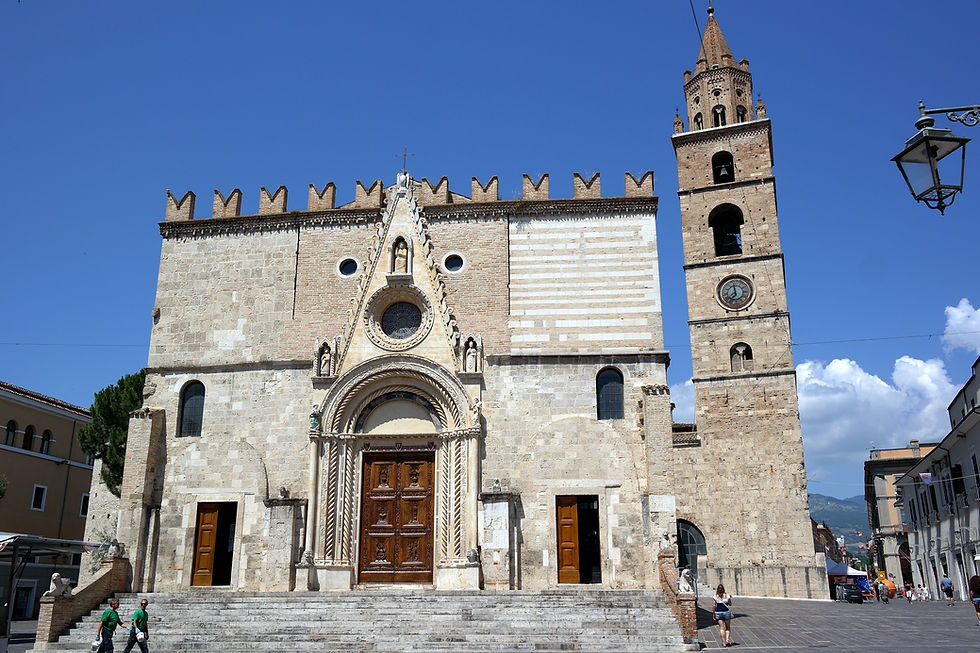The Apennine Chamois: the most beautiful in the world
- valeorsini31
- Mar 15
- 3 min read
Updated: Apr 23
The Abruzzo chamois (Rupicapra ornata), an endemic subspecies that lives only in the mountains of the Abruzzo Apennines, for the robustness and elegance of the forms has no rivals, is one of the rarest Italian mammals, an extraordinary ornament of the Apennine mountains.
Described by the German scholar Oscar Neumann in 1899, despite belonging to the same species as the Alpine and the Pyrenees, it differs in some physical and behavioral details, determined by prolonged isolation in a very localized area. It therefore presents, with good probability, the requirements to be considered an endemic species, that is, of the territory of which it bears its name. precious and distinct testimony of the becoming of nature.
The Abruzzo chamois is distinguished from the alpine one by the longer horns and more folded backwards and, in winter, for the elegant mantle that presents, on the neck, a band of light hair. bordered by two dark stripes that join together in a wedge on the chest.
Miraculously saved from extinction thanks to the providential establishment of the Abruzzo National Park, it is considered "the most beautiful Chamoscio in the world".
It is the only Italian zoological entity listed in the appendix of the Washington International Convention.
In recent times the number of Camosci d'Abruzzo has been increasing more and more. The species has also returned to life on the Majella and Gran Sasso d'Italian masses, where it had disappeared for over a century thanks to a joint intervention of the Abruzzo National Park and the Italian Alpine Club.

Going back in time to the early 1900s, hunting, poaching, hunting and increasingly anthropized natural areas were the main causes of the disappearance of the beautiful animal. The chamois population had been drastically reduced to about 30 individuals, present in the territories that had become the National Park of Abruzzo since 1922.
In the 90s, the Abruzzo National Park and the Italian Alpine Club intervened to form new colonies on the Sasso d'Italia and the Maiella. With successful targeted interventions, both free animals in the environment and areas in which to live have grown. To complete this positive scenario, the chamois released in the Sirente Velino Regional Park and in the Sibillini Mountains National Park, in the Monte Bove area, are added.
Species protected by hunting, today lives, protected and assisted, exclusively within the three national parks and the Abruzzo regional park. It is possible to admire the elegant animals both in the wildlife areas of Lama del Peligni (Majella), Pietracamela and Farindola (Gran Sasso), and in freedom especially in the splendid Campo Pericoli basin in the Corno Grande di Pietracamela Reserve heart of the Gran Sasso-Monti della Laga National Park.
In the early years of the reintroduction, the most delicate for the success of the project, hikers and mountaineers were very useful in monitoring chamois. "Invited to fill out an animal sighting form, they provided valuable information that confirmed the progressive increase in the reintroduced colony", continues Filippo Di Donato (representative of the Cai on the Federparchi Board of Directors) Today the number of Camosci d'Abruzzo has grown, but the guard cannot be lowered.
During the year, the Apennine chamois frequents two distinct areas: one for summering and one for wintering. The first is occupied from spring until autumn, in relation to climatic conditions and snowfall; normally, these are high-altitude meadows at altitudes greater than 1,700-1,800 m, interspersed with cliffs and cliffs. The second area is frequented by the animal from autumn to spring and consists of areas less open at lower altitudes, deciduous forests and, more occasionally, mixed forests with conifers at altitudes around 1,500-1,600 m.
As a rule, steep slopes where snow tends not to accumulate are preferred, with the presence of ledges and protruding rocks so that chamois can find food even with snowy ground and ensure greater defense against predator attacks.
Alert and shrewd animal, active especially during the day, it lives in herds formed by females and young on the one hand, and adult males on the other in smaller groups.
Today it is not difficult to spot chamois during simple excursions in the mountains of the Gran Sasso confirming the success of an extraordinary operation, which, together with the Abruzzo parks, is guaranteeing the preservation of this magnificent animal exclusive to the central Apennines.
The Apennine chamois is a now tangible presence that attracts visitors and photographers, contributing, together with other great herbivores such as deer and roe deer and their predator par excellence, the Apennine wolf, to the promotion of nature tourism in the territory.









.jpeg)

Comments